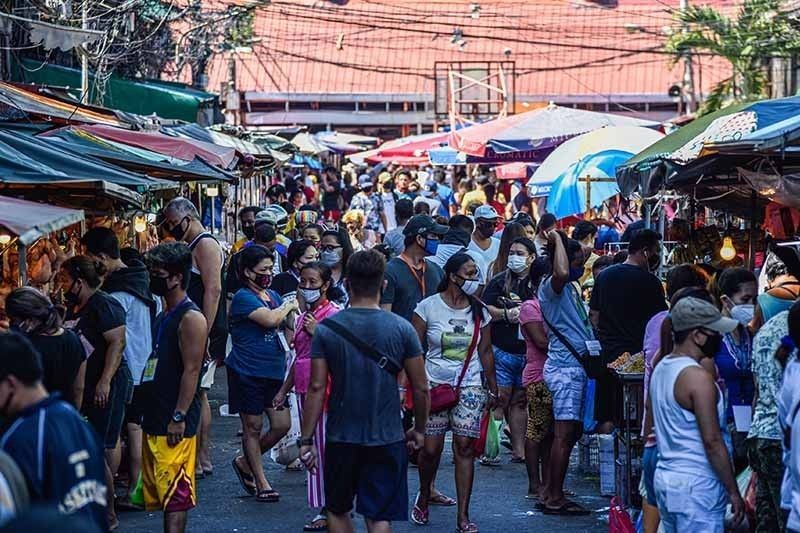General community quarantine to be implemented in moderate, low-risk areas

MANILA, Philippines (Update 3, 11:20 a.m.) — The national government on Friday declared that areas which are considered moderate and low-risk in the spread of the novel coronavirus will be placed under general community quarantine.
Presidential spokesperson Harry Roque confirmed that President Rodrigo Duterte approved the recommendation of the government’s coronavirus task force to continue the implementation of enhanced community quarantine in Metro Manila, Central Luzon, provinces of Pangasinan, Benguet, Albay, islands of Mindoro, Cebu, Panay Islands and Davao City.
“Ang lahat ng probinsya na di mananatili ang ECQ ay mapapasama sa new normal na tinatawag na general community quarantine,” Roque said.
A general community quarantine, which will begin on May 1, is less stringent form of the lockdown currently imposed in Metro Manila.
The moderate-risk provinces are identified as the following:
- Negros Occidental
- Negros Oriental
- Siquijor
- Davao Del Sur
- Davao Oriental
- Sultan Kudarat
- Lanao Del Sur
Meanwhile, the low-risk areas are as follows:
- Apayao
- Mountain Province
- Ifugao
- Kalinga
- Ilocos Sur
- Batanes
- Quirino
- Aurora
- Palawan
- Romblon
- Camarines Norte
- Masbate
- Sorsogon
- Guimaras
- Bohol
- Biliran
- Eastern Samar
- Leyte
- Northern Samar
- Southern Leyte
- Zamboanga Del Norte
- Zamboanga Sibugay
- Bukidnon
- Camiguin
- Davao Occidental
- Sarangani
- Agusan Del Sur
- Dinagat Island
- Surigao Del Norte
- Surigao Del Sur
- Agusan Del Norte
- Basilan
- Sulu
The following are considered moderate risk areas but will be subject to evaluation whether to implement enhanced community quarantine or enforce general community quarantine:
- Abra
- Ilocos Norte
- La Union
- Cagayan
- Isabela
- Nueva Vizcaya
- Marinduque
- Camarines Sur
- Aklan
- Capiz
- Samar
- Western Samar
- Zamboanga Del Sur
- Lanao Del Norte
- Misamis Occidental
- Misamis Oriental
- North Cotabato
- South Cotabato
- Maguindanao
The IATF recommended that the national government may consider the reprioritization of the Social Amelioration Program toward residents of areas placed under ECQ.
The following will be the “new normal” in areas placed under GCQ:
Movement of people: Movement is restricted under a general quarantine but some workers are allowed to physically report for work in phases.
The general population may go out of their residences to acquire basic necessities. But those with ages under 20 years old and those 60 years old and above—considered at high risk of contracting the disease—shall remain inside their homes.
Local government units are allowed to enforce curfew at night for non-workers.
Trade and commerce: Non-leisure stores in malls and shopping centers may partially open.
Airports and seaports may operate to allow “unhampered movement of goods.”
Full operation is recommended for agriculture, forestry, fisheries, food manufacturing and all supply chains, including ink, packaging and raw materials, supermarkets, hospitals, logistics, water, energy, internet, telecommunications and media.
Restaurants may only operate for take-out and delivery services.
Fifty percent to 100% opening is recommended for electronics, exports, e-commerce and delivery for essential and non-essential items, repair and maintenance services, housing and office services.
For financial services, business processing outsourcing, non-leisure wholesale trade and other non-leisure service, 50% onsite work and 50% remote work are recommended.
Education: Higher education institutions may continue classes to finish the academic year and issue credentials to students
The IATF recommended 100% closure of schools in areas deemed as “moderate to low-risk.” Roque said schools should consider opening classes in September. Schools, however, can conduct online classes.
Government projects: Priority and essential construction projects may resume.
Related video:
- Latest
- Trending
































